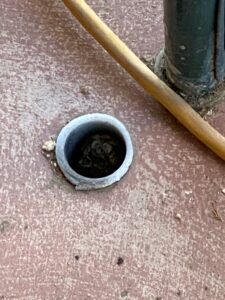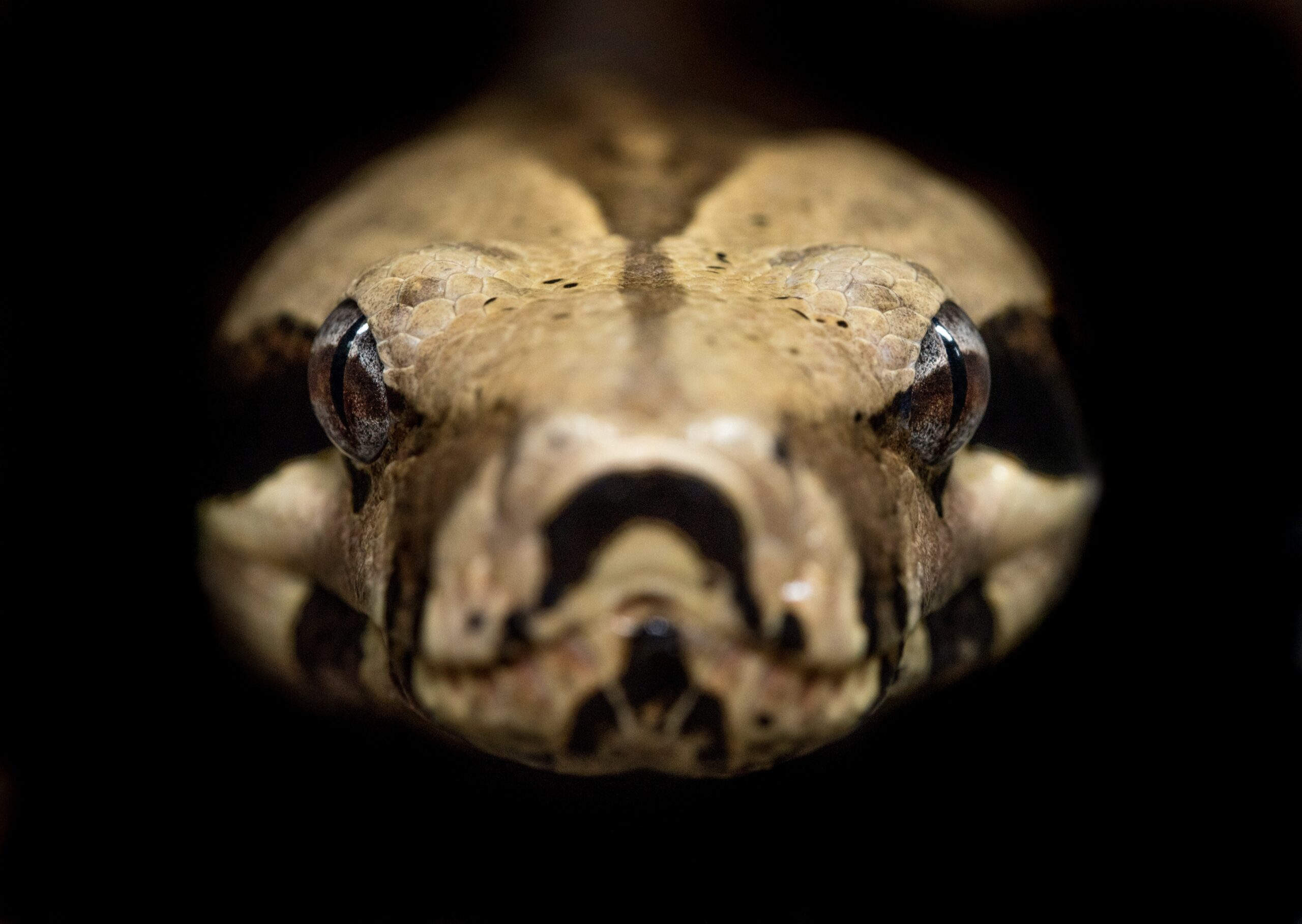Have you ever thought about the color of a snake’s tongue? I hadn’t until recently when a snake flicked its tongue at me. Let me tell you how it happened.
Relaxing by the Pool
I have a net fence around my pool. It’s good to have a pool safely fenced off to prevent tragedies, such as children falling in and drowning. You’re probably thinking of human children and while it’s certainly true for them, it is just as true for my small family members, such as the tortoises. The fence is usually closed, even when I am swimming. I can’t be watching who is ambling through the opening while I am doing my laps. The opening is created by picking up one of the poles from its hole in the patio and moving the netting aside.
On this particular day, I left the gate open because I knew I wouldn’t be at the pool very long. I only wanted to check the water temperature and the pump operation. When I finished, I went to put the pole back in the hole and saw a little black tongue flicking up at me! From the hole! Whoa! How did they get in there?
I recognized the tongue as a snake tongue. Snakes always delight me. Even rattlesnakes delight me, which I wrote about in my illustrated book, Don’t Make Me Rattle! Along with wondering how and why a snake went down the hole, I was curious to find out what kind of snake was down there.

I know the purpose of the flicking tongue. The snake was as curious about me as I was about them. The tongue was collecting chemical molecules, probably including some of mine, to take back to its Jacobson’s Organ for identification.
Whose Tongue is it?
This black tongue could belong to any number of local snake species. Which was it?
I decided a squirt of water from the hose might cause the snake to flee the hole as well as provide me some safety in case it emerged angry. I was barefoot, after all.
As I anticipated, the snake leaped upwards, but the snake was too thick to get more than a foot of its body out of the hole! Fortunately, the snake was able to pull itself back down the hole and disappeared. I swapped out a flashlight for the hose and peered into the depths of the hole. Apparently, there is a passageway underneath my patio. The snake had come up from below, probably curious about where the hole led to. Curiosity is common in reptiles and mammals.
The plump snake was easily identified as a Sonoran Gopher snake, Pituophis catenifer affinis. This nonvenomous snake has adapted to living with people very nicely, which is beneficial to us.
Back to the tongue. I got to wondering if all snake tongues were black like this gopher snake. Actually, they come in a variety of colors! Along with black, they can be cream, blue, and red. Some snakes even have tongues with two colors! For instance, a garter snake has a red tongue except at the tip, where it is black. Sadly, like me, not too many scientists have wondered about the colors of snake tongues and this issue has not been extensively studied. Be assured, from now on I will examine the tongues of every snake I meet.
My other snake book, Bahamian Boas: A Tabby Tale, features the boa constrictors of The Bahamas. I couldn’t tell from the photographs what color tongues they have, so I asked my friend and scientist Scott Johnson. Of course, he knew! The boas have gray-black tongues, while the Bahama Trope, otherwise known as the pygmy or dwarf boa, has a reddish-pink tongue.
I encourage you to join me in looking at snake tongues. Let me know what colors you find. I’ll make a list. We need to look more carefully at our mates who share our environment. We need to get to know them a bit more intimately.
